Walk in Stanley Park’s Shakespeare Garden & Around Beaver Lake
Report by Nina Shoroplova
Fourteen walkers joined co-leaders Nina Shoroplova and Caroline Penn in Stanley Park on Friday, July 7. We met at the memorial monument to Lord Stanley, the sixth Governor General of Canada, who, in October 1989, confirmed the name of the park, saying, “To the use and enjoyment of peoples of all colours, creeds, and customs, for all time.”
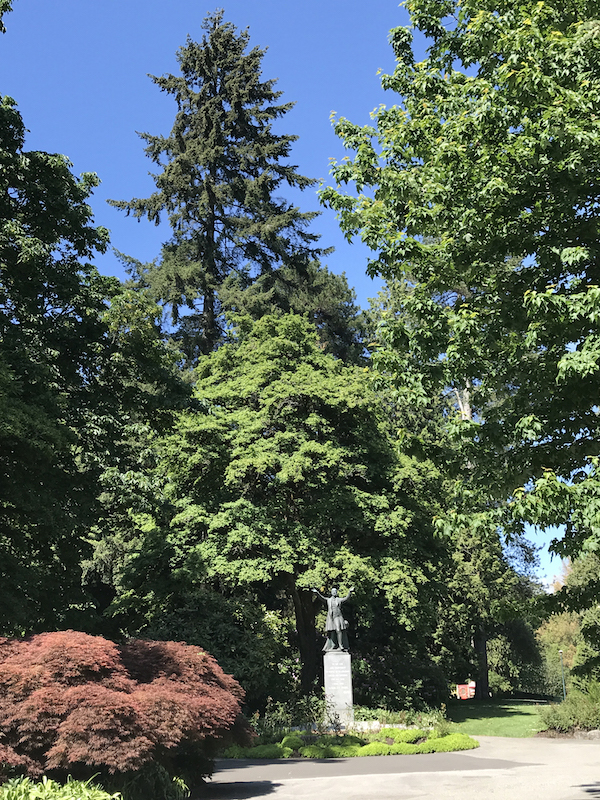
In the direction of the Robert Burns statue, several non-native trees held our attention: a giant sequoia (Sequoiadendron giganteum) that’s less than a hundred years old (see Legacy of Trees, pp. 242‑3) and two true cedars, a blue Atlas cedar (Cedrus atlantica ‘Glauca’) and a deodar cedar (Cedrus deodara).
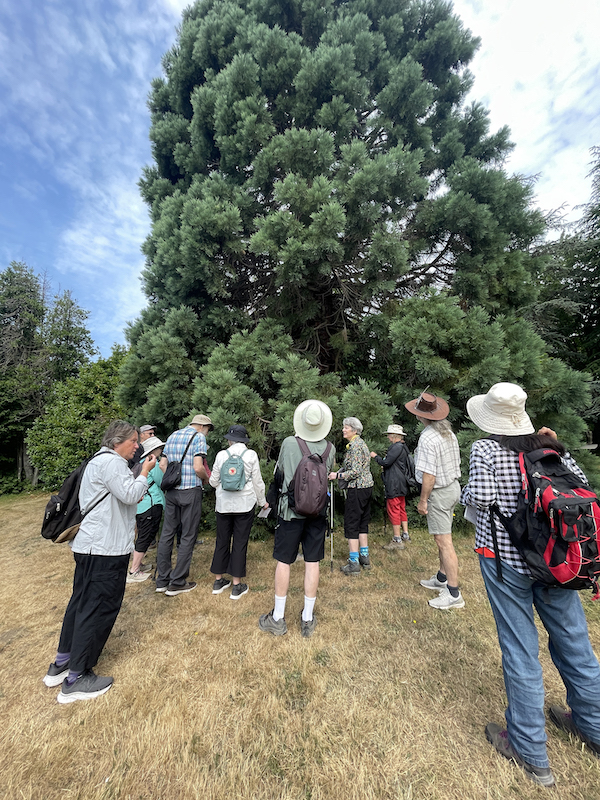
Facing the Lord Stanley statue are four maples indigenous to Japan: two Japanese maples (Acer palmatum var. dissectum atropurpureum) displaying gorgeous colours, and two Acer japonicum, fullmoon maples, the less frequently planted species of the two.
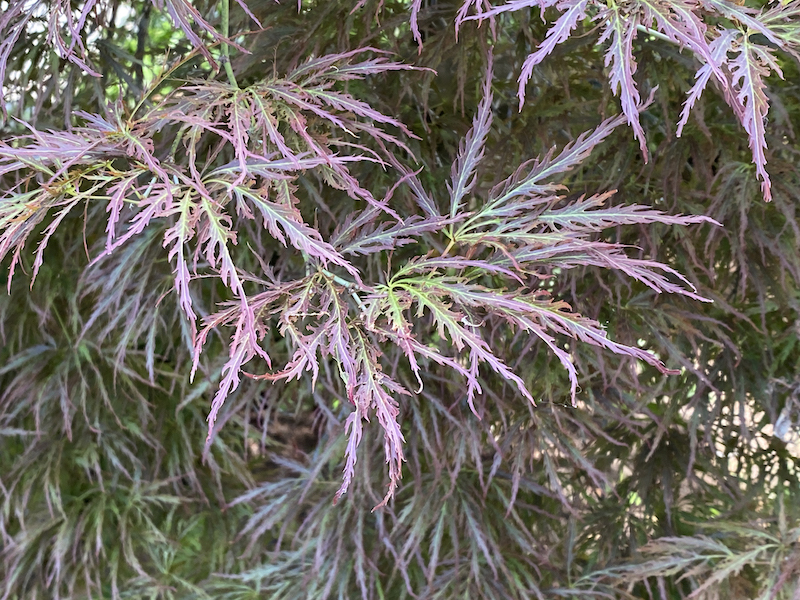
To the west of the Lord Stanley statue, we recognized another giant sequoia, a field maple, a bigleaf maple (Acer macrophyllum) the only native tree so far, and a white ash (Fraxinus americana).
We walked past a tree stump and learned it is possible to identify such a stump, well, some tree stumps, as long as they offer a few clues. This one had smooth grey bark, suggestive of elephant skin, and the root flare and roots had spread out well. A beech tree.
Turning our backs to the beech stump, we looked at the row of twenty black pines (Pinus nigra subsp. laricio), rising high into the sky. Other common names for black pines are Austrian pine and Siberian pine. But these particular black pines are indigenous to Italy. How intriguing to think of Henry Avison, the first ever superintendent of Stanley Park, writing to Italy to request twenty black pine saplings. He planted them as a backdrop to the zoo he began in the park in 1888 with an orphaned black bear cub.
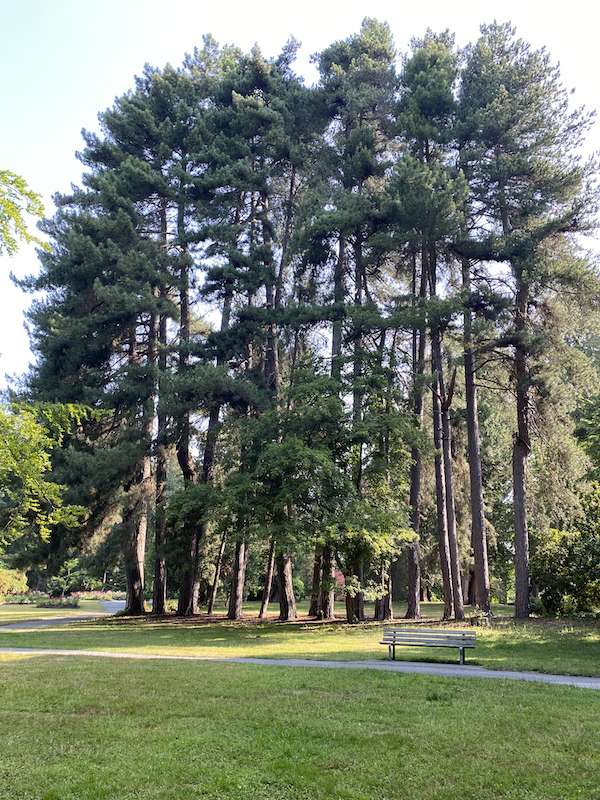
Walking northeast of the Rose Garden that the Kiwanis Club began in 1920, we took a close look at the Frisia black locust (Robinia pseudoacacia ‘Frisia’) and its bright yellow, alternate, pinnately compound leaves. (To be clear, the leaves on some trees grow opposite each other on the twig whereas on other trees the leaves grow alternately; a compound leaf is one made up of between three and many more leaflets; and pinnately suggests the leaflets grow like the barbs on a feather.)
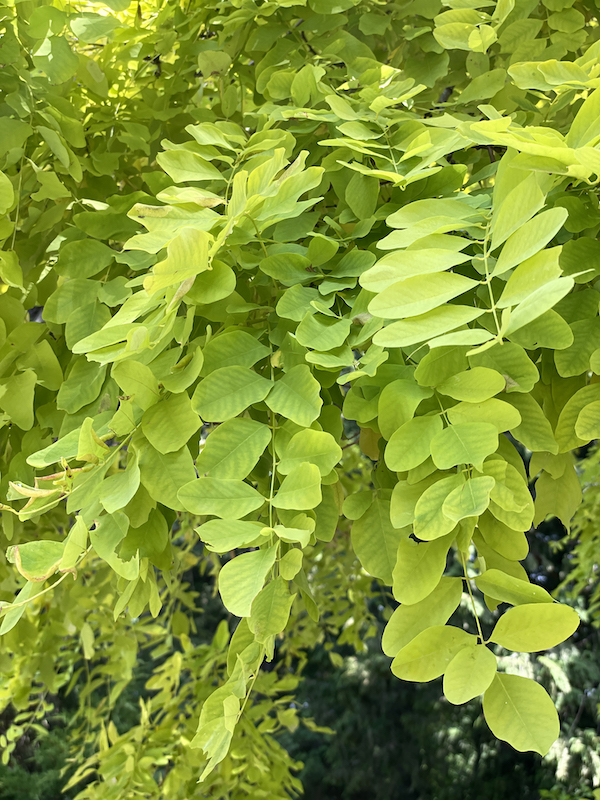
This started a pattern of identifying trees with pinnately compound leaves:
- the Frisia black locust,
- a hardy mimosa that will be in bloom in August,
- a tree of heaven (which is actually hellish because its prolific ability to sucker and to seed itself),
- a black walnut (Juglans nigra), and
- a scholar tree (now with the genus and species name Styphnolobium japonicum).
Once to the west of Pipeline Road with the Rose Garden to our east, we finally entered the Shakespeare Garden, planted in 1936, Vancouver’s Golden Jubilee year. The original trees carried Shakespearean couplets. For instance, the tall red oak still has a platelet: “The worthy fellow is our general: he is the rock, the oak not to be wind-shaken” (Coriolanus V, ii, 108).
Other trees have been planted in this area since 1936, such as a wide-spreading katsura (Cercidiphyllum japonicum). A live oak hybrid held our attention: Turner’s oak is a cross between the English oak (Quercus robur) and holly oak (Q. ilex), a live oak, an evergreen that’s indigenous to the southern US. It grows long acorns and has leaves reminiscent of holly leaves.
And we enjoyed the cool air under the vast canopy of the fernleaf beech (Fagus sylvatica ‘Aspleniifolia’).
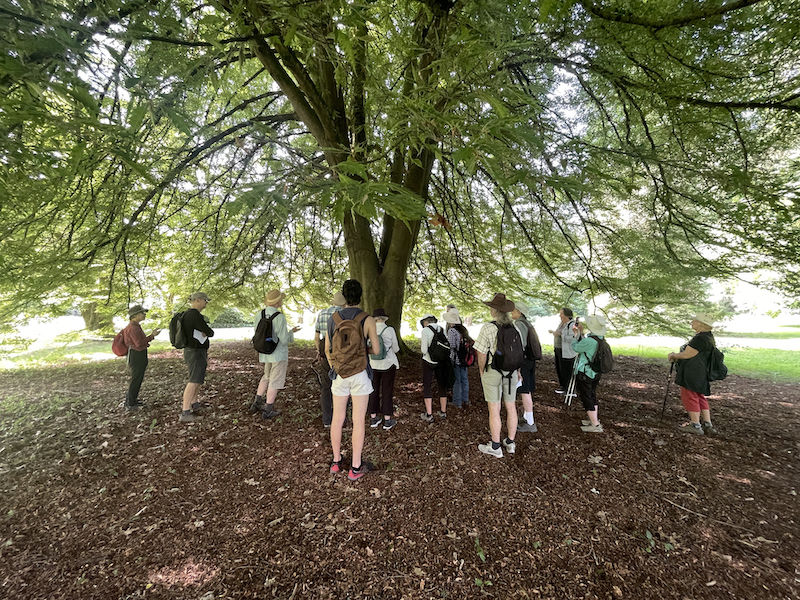
Moving toward the South Creek Trail, we admired the shiny, dark green leaves of a black tupelo (Nyssa sylvatica). On the opposite side of the path, some denuded western hemlocks (Tsuga heterophylla) were showing the devastation caused by the larvae of the hemlock looper moth during the infestations that began in earnest in 2019.
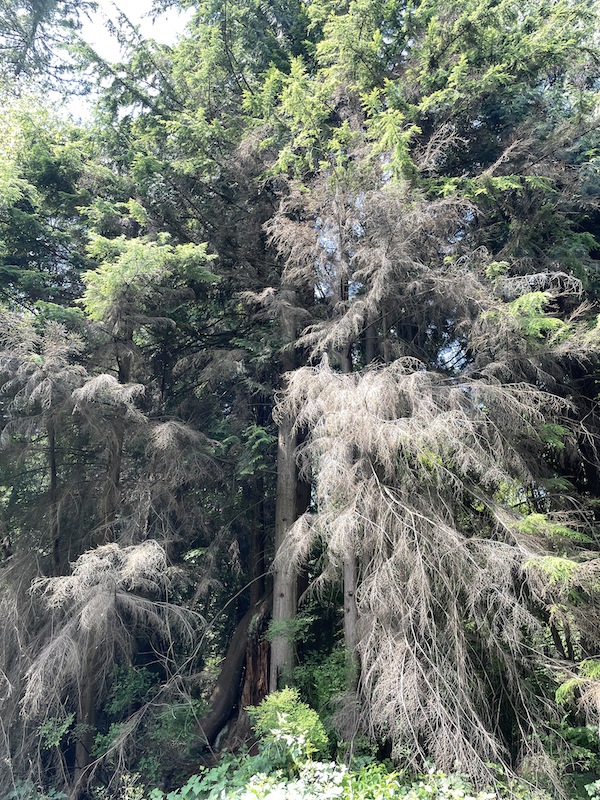
At this point, Caroline Penn led the walkers on South Creek Trail to Beaver Lake Trail, which circuits Beaver Lake, now almost overgrown with invasive water lilies.
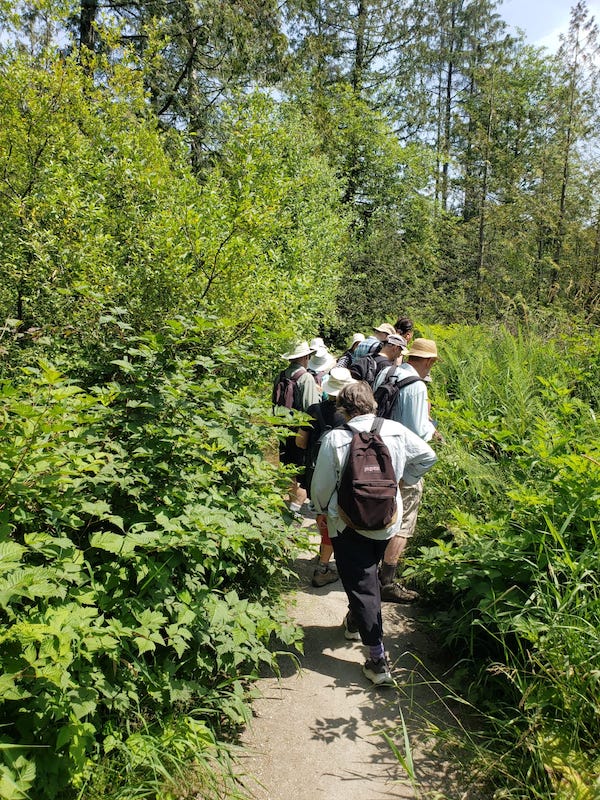
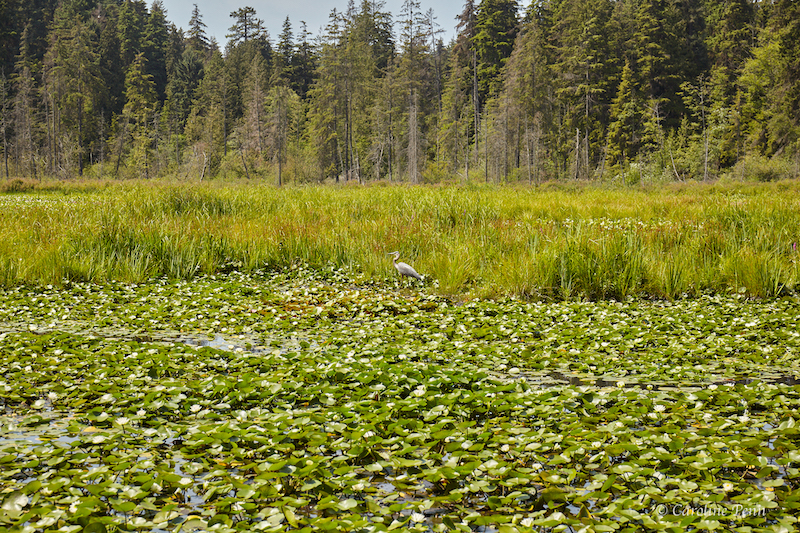
We looked at many nurse logs and stumps, and many native plants—red elderberry (Sambucus racemosa) with new berries, deer ferns (Blechnum spicant), many sedges, and hardhack (Spiraea douglasii). We heard a Swainson’s thrush.
However, unwanted plants are in abundance around and in the lake too, especially purple loosestrife (Lythrum salicaria) and the invasive fragrant pink waterlilies (Nymphaea odorata) that were planted in the lake in 1937 to “beautify” it. The restoration plan for Beaver Lake is explained well in an online document (see https://vancouver.ca/files/cov/Beaver-Lake-enhancement-proposal.pdf). And at 7:30 p.m. on November 16 this year, Dacyn Holinda, Conservation Projects Manager with Stanley Park Ecology Society, will give an online presentation to Nature Vancouver members on this very topic.